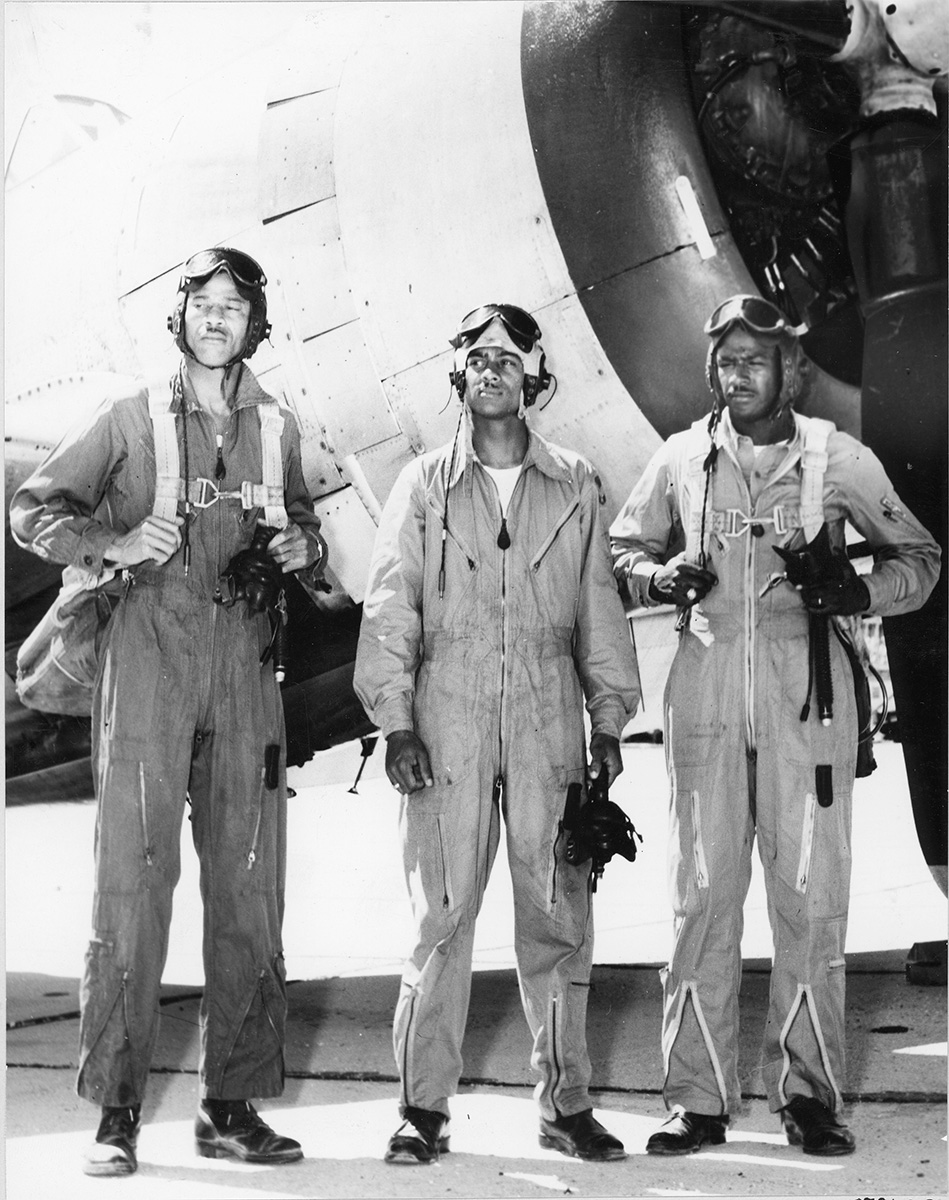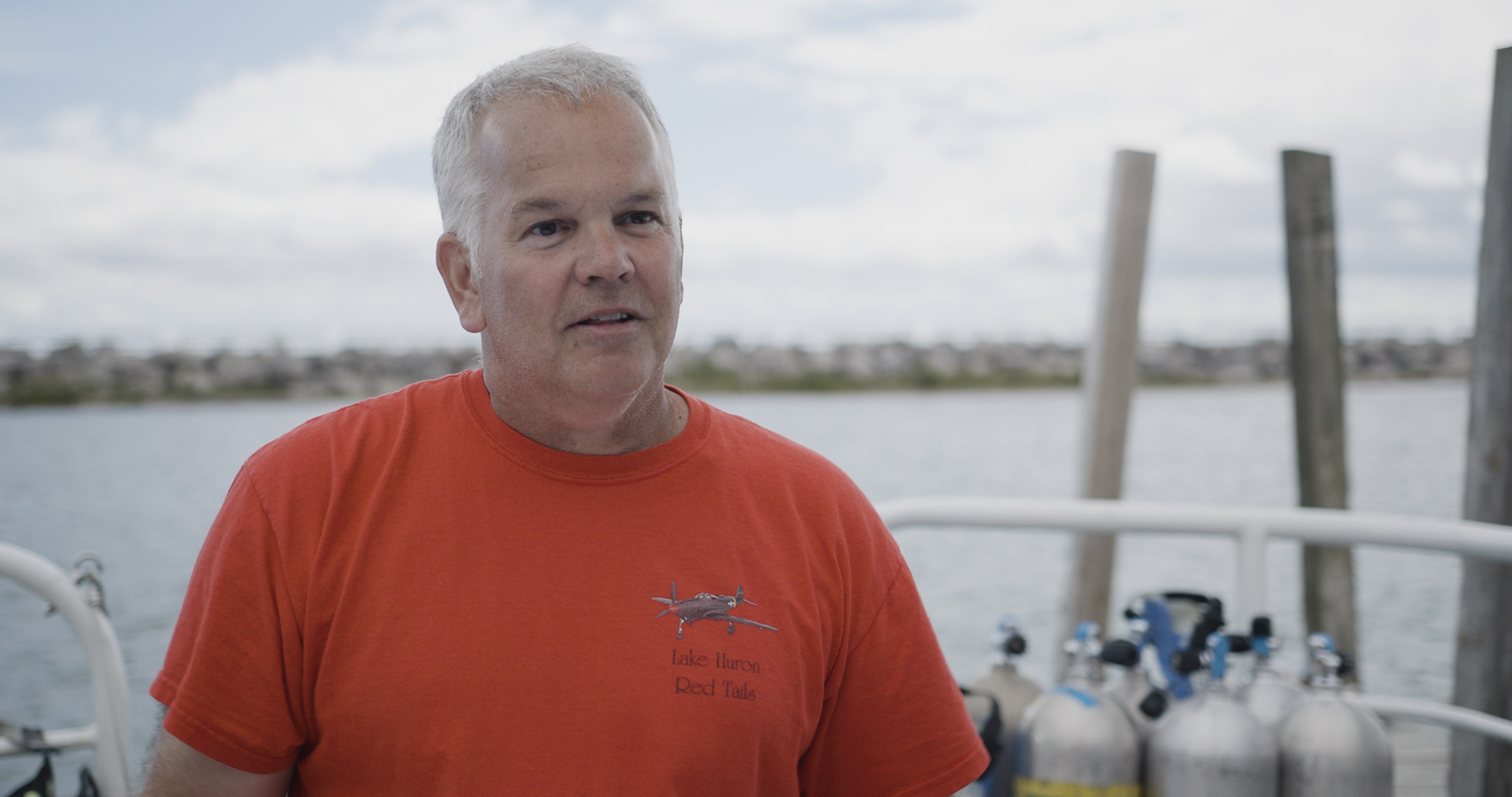Narrated by the serene voice of Sheryl Lee Ralph, “The Real Red Tails” from National Geographic is a captivating documentary that unearths the astonishing discovery of a WWII-era P-39 airplane in Lake Huron, Michigan. This one-hour special reignites the story of Tuskegee pilot Frank Moody, who perished in the crash, and highlights the enduring significance of the accomplishments of Moody and his fellow Tuskegee Airmen.
The documentary expertly interweaves historical footage with contemporary exploration. Black-and-white clips of the Tuskegee Airmen training in the skies transition seamlessly to vibrant, modern-day scenes of archaeologists, led by Wayne Lusardi, painstakingly searching the depths of Lake Huron for remnants of Moody’s plane. This juxtaposition not only honors the past but also brings to life the meticulous efforts involved in solving this 80-year-old mystery.

“The Real Red Tails” is a treasure trove for history buffs, aviation enthusiasts, and war historians alike. It offers an educational journey into the rich history of the Tuskegee Airmen while providing a thrilling narrative of the multi-year efforts to recover the downed P-39 airplane. The documentary’s calm and reflective tone, matched by Sheryl Lee Ralph’s narration, enhances the viewing experience, making it both informative and deeply moving.
The film’s editing deserves special mention. The seamless transitions between past and present allow viewers to appreciate the historical significance while engaging with the present-day quest to uncover the truth. The use of black-and-white archive footage from various news outlets provides a vivid glimpse into the history of the time, while the modern color footage showcases the dedication and expertise of the archaeologists involved in the recovery mission.
Interview with Lead Archaeologist Wayne Lusardi
To deepen the narrative, the documentary includes insights from Wayne Lusardi, Michigan’s state maritime archaeologist and artifact conservator. Lusardi, who has over 20 years of experience documenting shipwrecks and historic aircraft wreck sites, provides a unique perspective on the discovery and excavation process.

Q: What kind of archival research did you undertake before beginning the excavation?
Wayne Lusardi: Archival research for this project quite literally began with reading old newspaper accounts about Selfridge Field and the people that trained in Michigan during World War II. After finding information regarding Lt. Frank H. Moody’s accident, I found the official US Army aircraft accident report, Coast Guard logbooks detailing the search area, Lt. Moody’s death certificate, and funeral records. I then investigated genealogical resources to find Lt. Moody’s family history and names of living relatives. I also procured several contemporary Bell P-39 Airacobra operations manuals and parts lists.
Q: How did the underwater environment of Lake Huron affect the excavation process?
Wayne Lusardi: Tools used to document and excavate submerged sites in Lake Huron are very similar to those used in terrestrial settings. Shovels, trowels, tape measures, cameras, and clipboards are all the same whether on land or underwater. Specialized tools were used, however, including airbags to lift heavy objects, water pumps that served as underwater vacuum cleaners, and writing paper made of plastic so it wouldn’t fall apart underwater.
Q: What were some of the biggest challenges you faced during the excavation?
Wayne Lusardi: Working in a relatively shallow freshwater lake can be surprisingly easy, though it does have its challenges. The site for the most part does not have an appreciable current, the water is often clear, and by the end of summer is fairly warm. The water can be just cold enough, however, to drain a diver’s energy, especially divers used to working in warmer seawater. Artifacts can be buried and out of sight beneath the sand or can be heavily encrusted with mussels and algae and because they were so widely scattered took a lot of time to locate. The shallow depth allows greater amounts of time to work on the lake floor without safety limitations, but divers could only stay submerged about four hours a day.
Q: Did you find any artifacts or personal items within the airplane that provided additional historical context?
Wayne Lusardi: Finding the damaged propeller blades led directly to the determination of the cause of the accident. Finding the gauge panel, clock, throttle, and mixture control levers all indicated exactly how Lt. Moody was flying the aircraft at the time of the accident. Mapping the distribution of wreckage taught us exactly where the accident started to unfold, where the aircraft started breaking apart, where it hit the water and disintegrated, and where the artifacts became scattered over the last eight decades.

Through interviews and detailed examinations like these, the film delves into the mechanical system failure that led to Frank Moody’s tragic crash. However, rather than focusing solely on the loss, “The Real Red Tails” celebrates the legacy of the Tuskegee Airmen, presenting the recovery of the P-39 airplane as a new chapter in their storied history.
In summary, “The Real Red Tails” is more than just a documentary; it is an inspirational story of bravery, loss, and rediscovery. It serves as a poignant reminder of the Tuskegee Airmen’s contributions and a testament to the enduring human spirit. Whether you’re a fan of history, aviation, or simply enjoy a well-crafted documentary, this film is a must-watch. Don’t miss the premiere on June 3 on National Geographic.
Discover more from SNAP TASTE
Subscribe to get the latest posts sent to your email.



